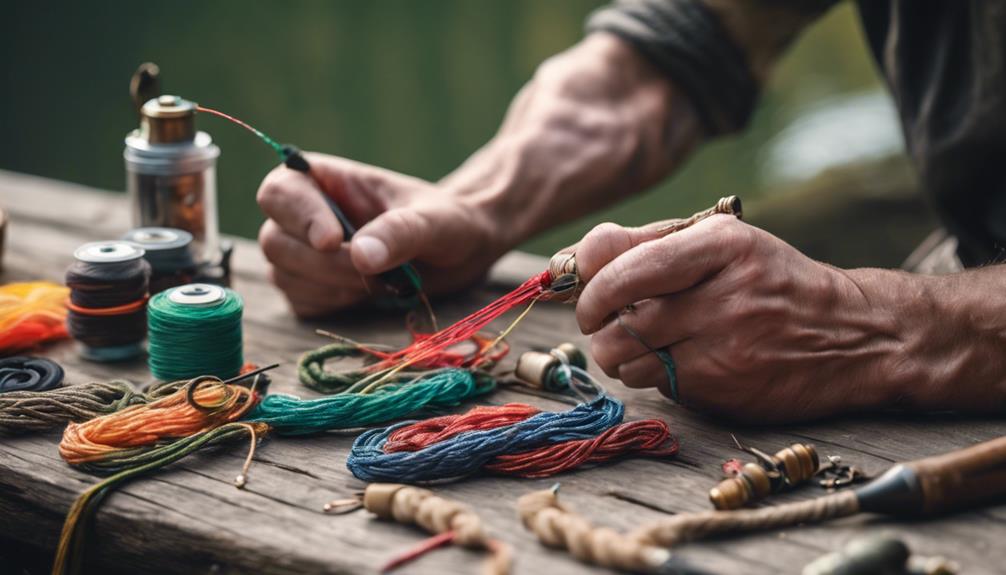Fly fishing is a cherished pastime that connects anglers with nature, and no place encapsulates this experience quite like the Umpqua River in Oregon. Known for its stunning scenery and abundant fish species, Umpqua fly fishing offers both novice and experienced anglers an opportunity to hone their skills while enjoying the great outdoors. In this comprehensive guide, we’ll explore the ins and outs of Umpqua fly fishing, including techniques, tips, and the best spots to cast your line.
Understanding Umpqua River: A Fly Fishing Paradise
The Umpqua River is renowned for its diverse ecosystem and excellent fishing conditions, making it a prime destination for fly fishing enthusiasts. Spanning over 111 miles, this river flows through the picturesque landscape of the Umpqua National Forest and the surrounding areas. The river is home to a variety of fish species, including steelhead, salmon, and rainbow trout, which thrive in its cool, clear waters. Whether you’re seeking the thrill of catching a trophy fish or simply enjoying a peaceful day on the river, Umpqua fly fishing offers something for everyone.
Essential Gear for Umpqua Fly Fishing
When it comes to Umpqua fly fishing, having the right gear can make all the difference. A quality fly rod and reel designed for the type of fish you’re targeting is essential. For steelhead and salmon, a 7 to 9 weight rod is recommended, while a 4 to 6 weight rod is more suitable for trout. Additionally, invest in a good selection of flies, including nymphs, dry flies, and streamers that mimic the local aquatic life. Don’t forget to pack essential accessories such as tippet material, leaders, and a net to safely land your catch. Lastly, comfortable waders and boots will keep you dry and allow for easy movement in the water.
Choosing the Right Fly Patterns for Umpqua River
Selecting the right fly patterns is critical for success in Umpqua fly fishing. The river’s rich aquatic ecosystem means that numerous insects and baitfish are available to mimic. Popular patterns to consider include the Adams dry fly, the Prince nymph, and the Woolly Bugger, which can attract various fish species. Additionally, local anglers often recommend using streamers and larger patterns during the early morning and late evening when fish are most active. Researching seasonal hatches and adapting your fly selection accordingly will significantly increase your chances of a successful catch.
Best Times of Year for Umpqua Fly Fishing
Timing is everything when it comes to Umpqua fly fishing. The river offers excellent fishing opportunities year-round, but specific seasons are better suited for certain species. Spring and fall are the prime times for targeting steelhead and salmon, as these fish migrate upstream to spawn. Summer is ideal for trout fishing, particularly in the cooler mornings and evenings, while winter provides a unique opportunity for anglers willing to brave the cold. Understanding the seasonal patterns of fish behavior will help you plan your trips effectively and maximize your fishing experience.
Techniques for Successful Umpqua Fly Fishing
Mastering various fly fishing techniques is crucial for success on the Umpqua River. One effective method is the “dead drift” technique, which involves casting your fly upstream and allowing it to drift naturally with the current, mimicking the movement of a real insect. Another popular technique is “swinging,” where you cast your fly across the current and let it swing downstream, which is particularly effective for targeting steelhead. Additionally, learning to read the water and identifying fish-holding areas, such as logs, rocks, and deep pools, will improve your chances of landing a catch.
Top Umpqua Fly Fishing Spots to Explore
The Umpqua River and its tributaries boast numerous fishing spots that cater to all skill levels. One of the most popular locations is the North Umpqua River, known for its breathtaking scenery and abundant steelhead. Another excellent spot is the South Umpqua River, which offers fantastic trout fishing, particularly in the spring. Additionally, the main stem of the Umpqua River provides ample access to diverse fishing opportunities. Be sure to check local regulations and access points, as some areas may require permits or have specific fishing guidelines.
Conservation and Responsible Fishing in Umpqua
As passionate anglers, it is our responsibility to ensure the sustainability of the Umpqua River’s ecosystem. Practicing catch and release helps maintain fish populations while allowing others to enjoy the thrill of Umpqua fly fishing. Additionally, be mindful of local regulations and guidelines, such as seasonal closures and size limits, to protect the river’s resources. Always clean up after yourself and avoid leaving any litter behind to preserve the natural beauty of this incredible fishing destination. By practicing responsible fishing, we can ensure that future generations can also enjoy the wonders of Umpqua fly fishing.
Local Resources and Community for Umpqua Fly Fishing
Engaging with the local fly fishing community can greatly enhance your experience on the Umpqua River. Numerous local shops offer guided trips, fly-tying workshops, and expert advice on the best fishing practices. Joining local forums or social media groups allows you to connect with fellow anglers, share experiences, and stay updated on the latest fishing news and conditions. Whether you’re a newcomer or a seasoned pro, tapping into these resources can provide valuable insights and foster relationships within the fishing community.
In conclusion, Umpqua fly fishing is more than just a hobby; it’s an opportunity to connect with nature, improve your fishing skills, and create lasting memories. By understanding the river, using the right gear, and employing effective techniques, you can enjoy a successful and fulfilling fishing experience. So pack your gear, head to the Umpqua River, and immerse yourself in one of Oregon’s most beautiful fly fishing destinations. Happy fishing!
